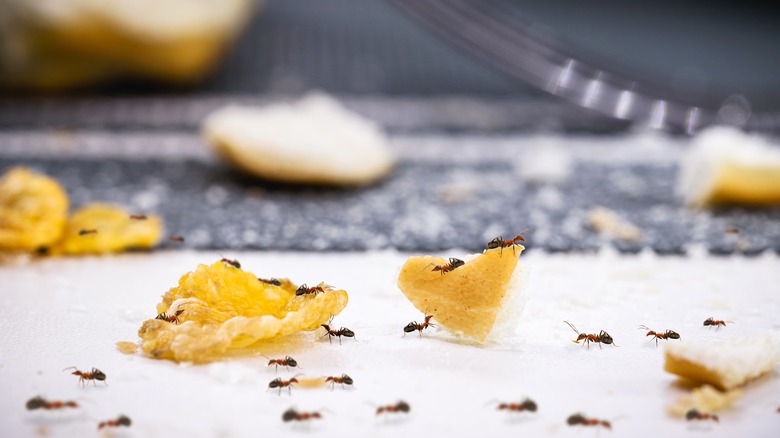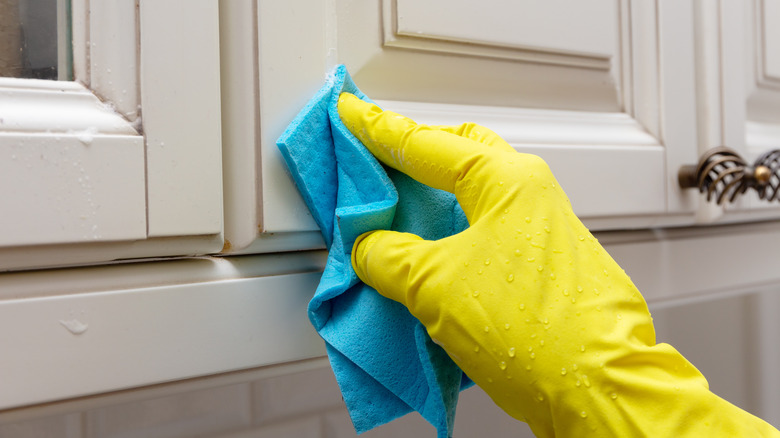How To Ward Off Spring Pests
Outdoor bugs can plague you in the spring months. Most common among those creepy crawly critters are stink bugs that don't just confine themselves to the inside of your home; you'll also see them collecting near your emerging garden plants. They may have overwintered in secluded places, occasionally appearing in a bathroom or around a window or door. The best way to eliminate them is to hand-pick them (wear gloves) and drown them in soapy water.
Warding off indoor pests, however, takes much more than an eagle eye, gloves, and a bucket of water. For other frequent spring visitors, like bees, wasps, fleas, pavement ants, carpenter ants, and even larger pests, like mice or rats, it will take more effort and sometimes the help of a professional extermination service. But before you reach that stage, there are several things you can do to ward off most spring pests on your own.
Bug out with spring cleaning
Your mom, grandmother, great-aunt on dad's side, or super-organized cousin twice removed were right: Always do your spring cleaning. No matter which pest you try to keep at bay, the answer will likely include some measure of cleanliness. You don't need to keep a house perfect enough to be featured in a magazine (not that it's a bad thing), but, in general, tidying up and a little light scrubbing in the right spots can go a long way toward warding off unwanted visitors.
The United States Environmental Protection Agency (EPA) recommends prevention as your best first-line defense against pests. Don't be their favorite restaurant or hangout spot, which means removing the food sources or easy access to your home. If you have pets, consider putting their food away at night instead of leaving it out for late-night munchers. Eliminate as much clutter as possible, and avoid piling up magazines, newspapers or mail. Also, seal up any spots where pests can sneak into your home, such as around pipes or baseboards.
Washing kitchen cabinets and scrubbing walls may seem to be a thing of the past, but the stickiness that can build up makes your home more attractive to crawling insects that see your domain as the best thing since forgotten sliced bread on a kitchen counter. Turn on some tunes, consider it a good arm workout, and break out the suds.
Pay attention to timing
"Timing is everything" is a common phrase, and it's also important for pest management. If you procrastinate too long, you may miss your opportunity to get the pests before they encroach upon your home. While it's crucial to eliminate the clutter, food sources, easy access, and other things that make pests want to take up residence, sometimes there is no substitute for going on offense and taking the fight to them.
Do not wait until hoards of tiny invaders come charging your abode. The most effective weapon against spring pests, they say, is to head them off at the pass with preventative measures that are timed to get them before the invading armies of bugs and rodents arrive at the gate. The type of pesticide you use is a personal decision since some people may opt for green technology, others organic compounds, but be sure to time it before the bugs wake up and gain full strength.
Homeowners should check their state's county agricultural cooperative extension offices — find yours here – to determine what pests might be hatching or arriving on their doorstep, which insects are invasive (there are reporting procedures for some of them), and what other problems are particular to your area. Knowing your tiny little enemy is the first step toward warding off those spring pests.


